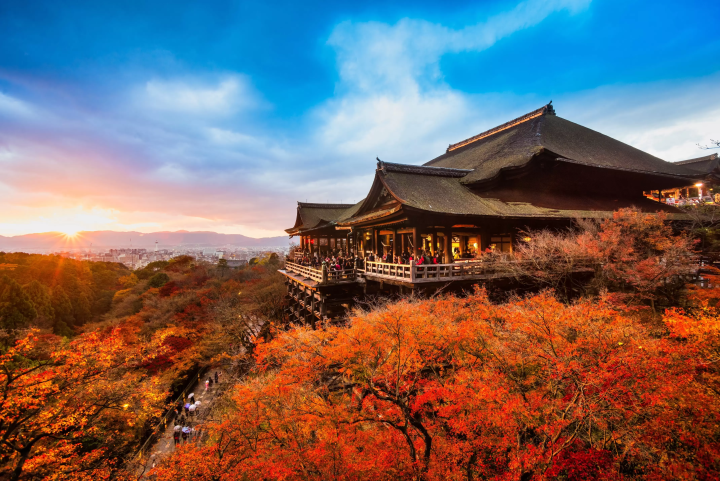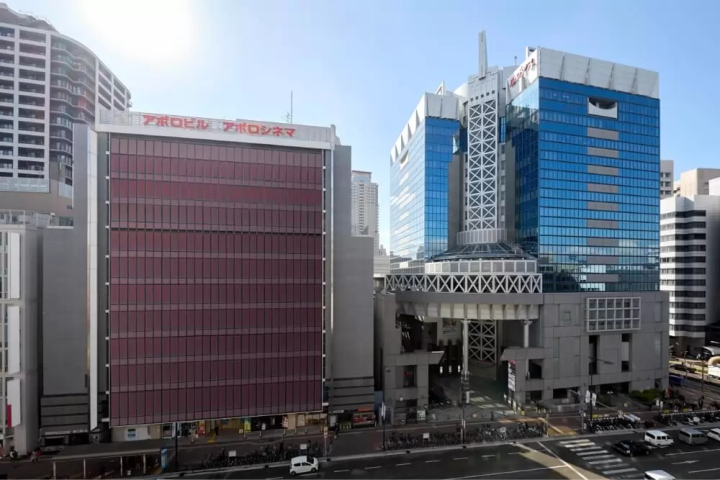GTN recommends two famous places to see hydrangeas! A detailed explanation of how to enjoy them

Hydrangeas are colorful and beautiful flowers that brighten up early summer. Why not enjoy hydrangeas that shine beautifully not only on sunny days but also on rainy days? This time, GTN staff will introduce recommended hydrangea spots in Tokyo.
With the start of early summer, Japan enters the rainy season. If you visit Japan during this time, you may feel down because of the constant rain, but you can still enjoy beautiful flowers during the rainy season. A representative flower is the vibrantly colored hydrangea . While purple and blue are typical colors, hydrangea varieties come in a variety of colors and shapes, and the appeal is that you can enjoy the colorful gradations.
This time, GTN staff will introduce recommended places to view hydrangeas in Tokyo and events themed around them. Come and enjoy the unique atmosphere of a rainy day!
-
Table of Contents
- How to enjoy hydrangeas
- 1. Bunkyo Hydrangea Festival
- 2. Kodaira Hydrangea Festival
- How about taking a stroll around Kawagoe?
- How to get to the GTN Haneda Airport Garden store and what products are on sale
How to enjoy hydrangeas
When viewing hydrangeas, you can enjoy them even more if you pay attention to a few points, so let's take a look at them together.
The charm of color and shape
Hydrangeas come in a variety of colors, including blue and purple. Even the same plant can have different flower colors. The colorful petals give a gorgeous impression to viewers, and the flowers come in a variety of shapes, including spherical, flat, and conical. In particular, their unique clusters of flowers have a beauty unlike any other flower. The complex shape and delicate arrangement of the petals draw viewers in.
Seasonal Feeling
Hydrangeas are flowers that mainly bloom during the rainy season, and their refreshing colors brighten up the days of the rainy season. The combination of the air after the rain and the hydrangea flowers creates a unique atmosphere.
Culture and History
Hydrangeas have long been popular in traditional Japanese gardens, temples, and shrines. In particular, hydrangeas have been positioned as an important element that adds elegance and charm to Japanese-style landscapes such as teahouses and gardens. The flower language of hydrangeas is said to be "fickleness," and because they bloom in a variety of colors during the rainy season, they are also known as a flower that symbolizes this season.
When many hydrangeas gather together, it creates an atmosphere that makes you feel as if you have wandered into a fantastical world. This fantastical atmosphere is definitely something you should try.
Now, we will introduce two recommended spots where you can enjoy hydrangeas in Tokyo.
1. Bunkyo Hydrangea Festival
Bunkyo Ward is located in the center of Tokyo, and is known for its lush greenery and beautiful flowers, including the Bunkyo Hydrangea Festival, which is held every year in Bunkyo Ward, Tokyo, and is a festival where people can enjoy hydrangeas.
Beautiful hydrangeas adorn the grounds of Hakusan Shrine and Hakusan Park. Visitors can enjoy a stroll while admiring the approximately 3,000 hydrangeas of various varieties and colors. Events are also held, mainly on Saturdays and Sundays, where you can experience local culture and traditions.

[Period] Saturday, June 8th, 2024 to Sunday, June 16th, 2024
[Venue] Hakusan Shrine (5-31-26 Hakusan, Bunkyo-ku) and Hakusan Park (5-31 Hakusan, Bunkyo-ku)
[Access] 3-minute walk from Hakusan Station on the Toei Mita Line, 5-minute walk from Honkomagome Station on the Tokyo Metro Namboku Line [Events] Hydrangea concert, sketching session, dental health prayer festival, hydrangea mikoshi, etc.
Please check the Bunkyo Ward Office website for details.
Hakusan Shrine
Hakusan Shrine in Bunkyo Ward, Tokyo is a historic shrine that was founded over 1,000 years ago.
The enshrined deities are Kukurihime, Izanagi, and Izanami, and they are also known as gods of matchmaking.
[Telephone] 03-3811-6568
[Shrine office reception] 10:00-16:00
Shrine Visiting Procedures and Manners
The etiquette for worshiping at a shrine may differ depending on the shrine and region, but here we will introduce the general etiquette and manners to follow. In Japan, anyone can visit and worship at a shrine, regardless of their religious beliefs.
Dress code for worship
There are no particular rules for what to wear when visiting a shrine, but it is best to avoid revealing or flashy clothing. The grounds are large, and the approach to the shrine may be gravel, so it is recommended that you wear comfortable clothing.
How to pass through the torii gate
Torii gates are the symbol of shrines and mark the entrance to sacred areas.
Before passing through the torii gate inside the shrine grounds, bow and greet the gods.
When you have finished praying at the shrine and are leaving, it is a good idea to turn around and bow to the shrine staff before passing through the torii gate.
How to walk along the approach to the shrine
The center of the approach to the shrine is called "Seichū" and is thought to be the path through which the gods pass, so try to avoid walking in the center of the approach if possible.
Etiquette for worship
It is considered important to purify your mind and body before worshiping, so before you begin, be sure to purify your hands and mouth at the "temizuya" (purification fountain) located on the side of the approach to the shrine.

Once you have finished your purification ritual, proceed to the worship hall.
There is a donation box in front of the worship hall, so put your offering in there. It is common to put in 5 yen as it is said to lead to good fortune, but the amount is up to you, so there is no rule that it has to be 5 yen. Also, some shrines have a large bell hanging from the top of the donation box, so if there is one, shake it vigorously to make a sound before putting your offering in.

After putting in your offering, bow deeply twice and clap your hands twice.
Once you have finished clapping, place your hands together and pray.
Once you have finished praying, bow deeply once more.
This etiquette is called " two bows, two claps, one bow ."
When enjoying the hydrangeas at Hakusan Shrine, be sure to pay your respects and observe proper etiquette.
2. Kodaira Hydrangea Festival
Hydrangea Park, located in Kodaira, Tokyo, was built in 1973 with the aim of becoming a famous hydrangea spot. At one point, the plant was in danger of extinction, but a green space management technique called "sprout renewal" was implemented, and it was reborn as a beautiful new hydrangea park, as it is today.
The Kodaira Hydrangea Festival is held at Hydrangea Park in mid-June.
The hydrangeas at Ajisai Park are at their best in June, with around 1,500 plants blooming beautifully.
The hydrangeas lit up at night are also very picturesque.
Why not come and see the hydrangeas at Kodaira Hydrangea Park?
[Location] Map available here
[Period] Saturday, June 1st to Tuesday, June 30th, 2024
[Light-up] Saturday, June 8th to Sunday, June 23rd, 2024
[Access] 5 minutes walk from the south exit of Kodaira Station on the Seibu Shinjuku Line


How about taking a stroll around Kawagoe?
To visit Ajisai Park, you will need to use the Seibu Railway, which also goes to Kawagoe, known as Little Edo.
Kawagoe is a historic city located in Saitama Prefecture, and is a distinctive area that retains a strong sense of the atmosphere of the Edo period. It is dotted with old storehouse buildings and stone-paved streets, and tourist attractions of great historical value. You can also enjoy traditional crafts and local cuisine, and various festivals and events are held throughout the year. It is a charming city that is perfect for a day trip or sightseeing stroll.
At the GTN Haneda Airport Garden store, you can purchase the "SEIBU 1Day Pass" which allows you to visit Seibu Railway spots at a great price.
For more information on the SEIBU 1Day Pass , how to purchase it, and recommended sightseeing spots in Kawagoe, please see the article below.
How to get to the GTN Haneda Airport Garden store and what products are on sale
Please see the article below for directions from the arrival lobby of Haneda Airport (International Terminal) to Haneda Airport Garden and our store.
Please see the article below for more information on the products we sell.
For more information about long-term plans for use in Japan, pocket Wi-Fi, home internet and other services, please visit the GTN Mobile website .
*The long-term plan is a service aimed at foreigners residing in Japan and is therefore not available to Japanese nationals.
Additionally, the GTN Haneda Airport Garden store also posts about recommended spots and gourmet food on Instagram , so be sure to check it out!
GTN provides various solutions to foreigners to realize a multicultural society under the mission of "Making Japan a reality for foreigners." We will tackle various social issues with the aim of creating an environment where people can live their normal lives as normal, no matter where they are in the world.
The contents on this page may partially contain automatic translation.




























![[50 minutes by car from Nagoya] Experience "sake and culture" in Tokoname](https://resources.matcha-jp.com/resize/720x2000/2026/01/13-255411.webp)



